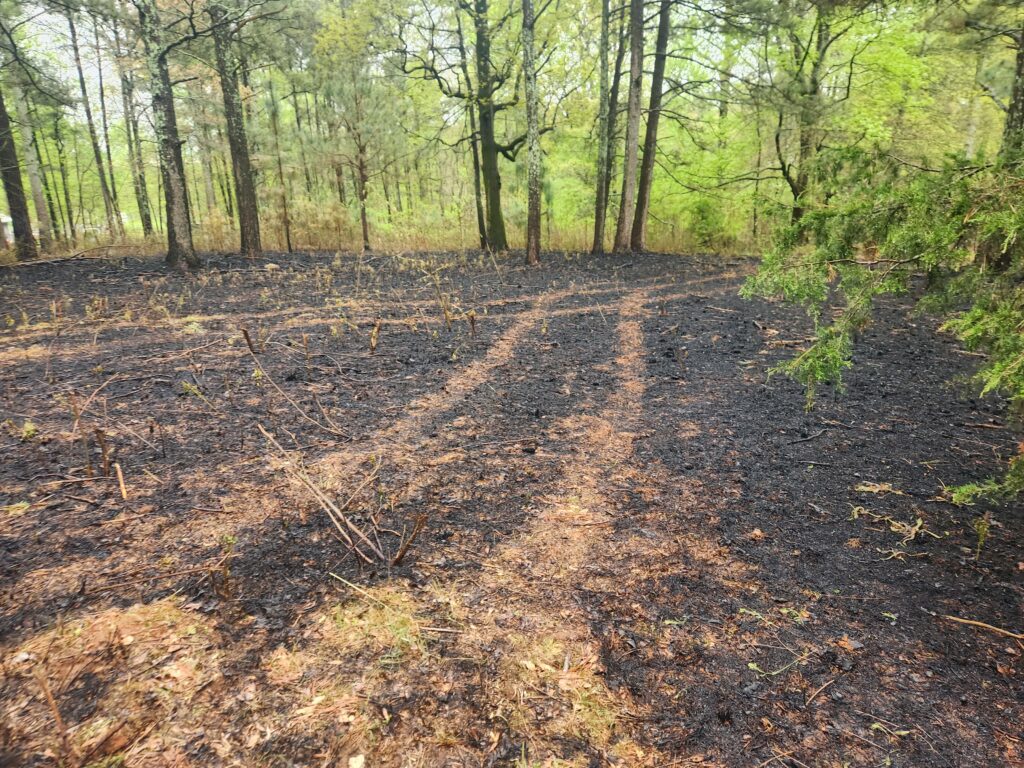Jannette Emmerick
Smokey the Bear, Disney’s “Bambi,” and a plethora of other fire suppression movements stigmatized and alienated fire’s vital role in nature. In recent years, due to devastating forest fires, forest management has realized the need of fire for healthy ecosystems.
At UWG, Biology Professor Dr. Andrew Edelman teaches a Fire Ecology class encompassing the necessity of prescribed forest burns, offering on the field experience where students visit private land and execute supervised burns.
Since 2011, Edelman has worked with Conservation Biologist Jonathan Stober, who is now Chair of the Northeast-Midwest (NE-MW) Regional Prescribed Fire Council Coordinating Committee and a Liaison for the Coalition of Prescribed Fires Inc. However, it wasn’t until 2013 that they began collaborating to lead prescription fires with Edelman’s fire ecology class.
“[We] just started having them come here. To the farm, to help me with burns that we do here,” said Jonathan Stober, “Which is a lot less red tape, but it exposes them and gives them experience to deal in prescripted fire management.”
Stober leads the prescribed burns on his family’s farm land and neighboring properties. Before 2017, Edelman and Stober used to bring students to Talladega National Park, but because of allthe permissions needed, they shifted gears to helping private landowners in the community and allowing UWG students tangible application for their in-class learning.
“One of the things about prescribed fire management, or really any discipline, is that you can do a lot of book learning, where you learn how to do something by the book,” said Stober. “But in the field, things often do present themselves differently.”
Edelman equips students with knowledge and Stober enforces field applicability.
“They go through weather, fire behavior, containment, contingency, fire ecology, fire perception, and he rolls all that up in the classroom,” said Stober. “And then we come to the field here where we have a prescription, or a plan that we have for the fire event, and we wait for the weather conditions to align, and then we execute a fire.”
Stober also helps with “learn-and-burns” with private landowners.
“In 2019, before the Pandemic, we had a learn-and-burn where we had private landowners, [and had] Georgia Forestry Commision come out and help us execute a prescribed fire to show land owners the steps you go through,” said Stober.
“[A prescribed fire requires] all these different combinations of elements of the fuel and how dry it is, the atmospheric conditions, meaning what the relative humidity is, how many days since rain, and it’s also about how you’re firing the unit,” continued Stober.
A prescribed fire needs not just good conditions but also general knowledge to keep safe and how to control the fire beforethey can ignite the “black line,” which is the starting point of the prescribed fire.
Fire is a necessary element for a healthy ecosystem, with many states in the Western United States now reaping the devastation of fire suppression. This is why prescribed fire efforts have amped up there, but also a revitalized necessity in the South.
“[Prescription fires are] also used, particularly in the southeast, as a tool to manage ecosystems and ecosystem imperative, creating habitat and structure for all the native species and wildlife in the Southeast,” said Stober. “Because the Southeast is kind of the epicenter of fire dependent species.”
In Georgia especially, biomes like the longleaf pine ecosystem are dependent on fires with trees that germinate from forest fires and other species that benefit from ecological succession, a natural pattern where wildlife recovers to a state of relative stability.
“When I was in school, fire really wasn’t thought of as a land management tool quite as it is today,” said Stober. “Since I graduated from [the University of Georgia], fire ecology has become much more of a pronounced discipline and also prescribed fire as an aspect of fire management has become much more broad and well versed.”
Learning how to utilize fire is vital for protecting communities, property and lives. The era of fire suppression is falling away and replaced with a better understanding of taming fire for the benefit of society and nature.
“One of the long term goals is to start a Prescribed Burn Association where we can do more of that,” said Stober. “Where we would have a group of landowners and college students as well, work together as a community to execute prescribed fires in the Carroll County area.”
Fire ecology education is easily available through the Georgia Prescribed Fire Council’s website and the Coalition of Prescribed Fires Inc.’s website.
“Both of those groups work to give information, give insight, and build a community around prescribed fire,” said Stober. “With the infrastructure built, there are a lot of jobs and opportunities to start doing more of this work into thefuture. I see this really as a place of growth.”
You may also like
-
UWG’s Ingram Library Hosts Pop-Up Study Spot to Help Students Prepare for Finals Week
-
UWG Offers Mental Health Support And Academic Services To Maintain Student Success During Finals Week
-
UWG Alumnus Shares His Experience Exploring the Underground Flood Channels of Las Vegas
-
Georgia Students Simulate the Struggles of Dementia
-
UWG PR Students Score a Georgia Power Tour at Atlanta Corporate Office
